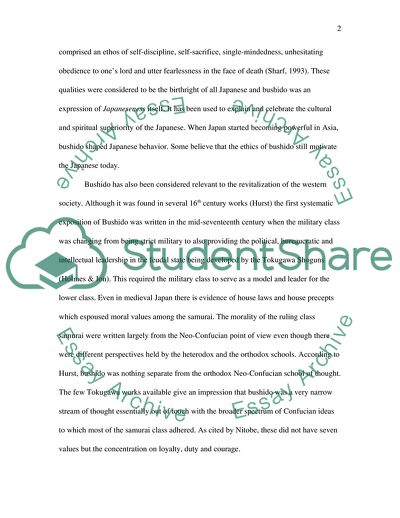Cite this document
(Japanese Culture: Bushido Coursework Example | Topics and Well Written Essays - 1500 words, n.d.)
Japanese Culture: Bushido Coursework Example | Topics and Well Written Essays - 1500 words. https://studentshare.org/culture/1709261-japanese-culture
Japanese Culture: Bushido Coursework Example | Topics and Well Written Essays - 1500 words. https://studentshare.org/culture/1709261-japanese-culture
(Japanese Culture: Bushido Coursework Example | Topics and Well Written Essays - 1500 Words)
Japanese Culture: Bushido Coursework Example | Topics and Well Written Essays - 1500 Words. https://studentshare.org/culture/1709261-japanese-culture.
Japanese Culture: Bushido Coursework Example | Topics and Well Written Essays - 1500 Words. https://studentshare.org/culture/1709261-japanese-culture.
“Japanese Culture: Bushido Coursework Example | Topics and Well Written Essays - 1500 Words”. https://studentshare.org/culture/1709261-japanese-culture.


